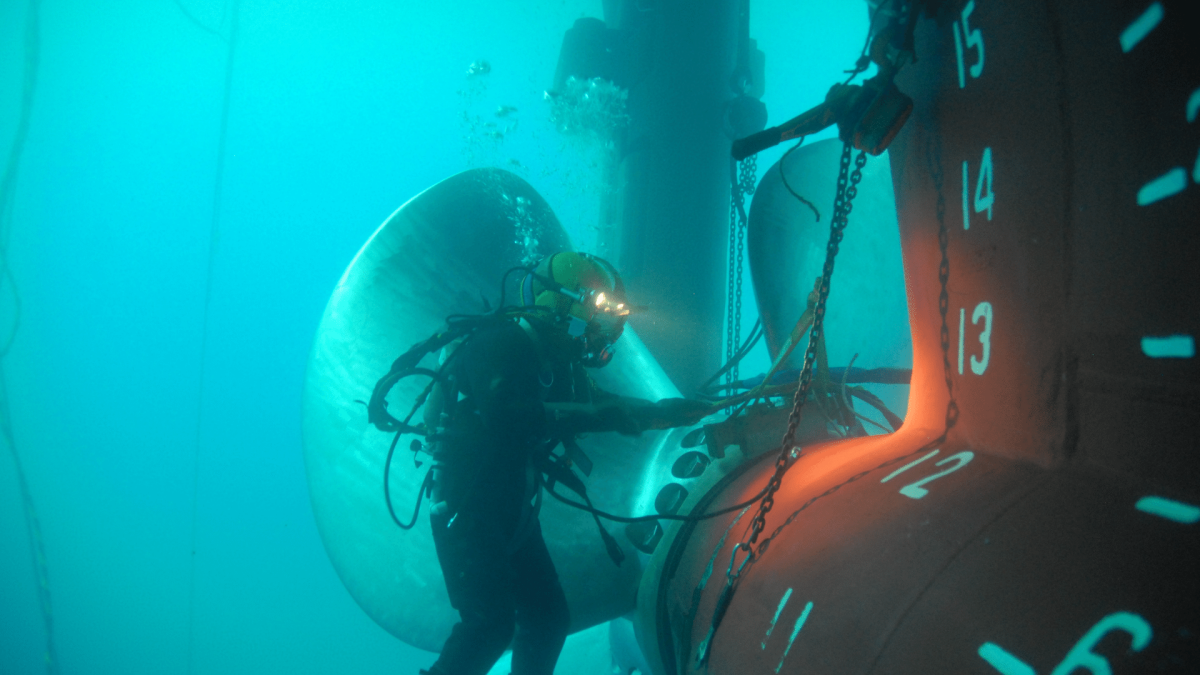The Ocean’s Workshop: Cutting-Edge Underwater Repair Services
by ago0

The maritime industry is one of the most important trade and transport sectors in the world. 90% of goods and services are transported by sea at some point in their journey, making the industry indispensable for sustained global trade and travel.
As the reliance on shipping continues to grow, there is an increasing demand for these operations to not only be more efficient but also more environmentally sustainable.
In addition to this, shipping environments are inherently hazardous, making the regular and effective maintenance of vessels essential for ensuring the safety of seafarers and uninterrupted trade flows. Routine and proficient repairs minimise operational disruptions and increase the returns on investment, underscoring the importance of maintenance in enhancing overall shipping efficiencies.
This is especially crucial for countries whose economies are heavily dependent on international trade, where any interruption can trigger significant economic turmoil and shortages of essential goods such as food and medicine.
In this article, we’ll be exploring the role of marine services, with a particular focus on underwater services, within the maritime industry and how innovations in underwater repair services have the potential to transform the sustainability and endurance of maritime operations.
What Are Underwater Repair Services?
Underwater repair services are a critical component of the maritime industry, focused on maintaining the safety and efficiency of vessels by addressing maintenance needs and repairs directly in the water. These specialised operations are essential for extending the life of vessels, ensuring that they remain safe and fit for the unpredictable conditions at sea.
Specialist underwater marine services companies are staffed by highly skilled personnel adept in navigating challenging and hazardous ocean environments. It is quickly becoming industry standard for ship owners to employ these experts to ensure that their vessels not only meet safety standards but are also fully prepared for secure operations at sea.
The responsibilities of underwater marine services companies include:
- Hull Cleaning and Propeller Polishing – This involves removing organic growth and other accumulations from the hull and propellers of a vessel, which enhances its overall performance and efficiency.
- Routine Underwater Inspections – These are conducted to scrutinise the structural integrity of vessels and fixed-state rigs beneath the waterline, aiming to detect and address any emerging issues early on.
- Pre-purchase Inspections and Inventories – These evaluations are crucial before the sale or acquisition of a vessel, ensuring that all aspects of the ship and its equipment are in good condition and resolving any concerns related to repairs or inventory discrepancies.
- Maintenance of Submerged Navigation Equipment – Vital for safe navigation, this equipment located below the waterline requires regular checks to prevent damage and maintain operational effectiveness.
Opting for underwater services allows for maintenance and repairs to be conducted while the vessel remains submerged, significantly cutting down on downtime. This method reduces operational disruptions and avoids the substantial costs and delays typically associated with dry-docking.
Additionally, regular underwater inspections and maintenance preemptively addresses minor issues before they develop into major, more costly problems, ensuring ongoing vessel integrity and reliability.
Advanced Technologies in Underwater Repair Services
Technological advancements have continually shaped the maritime industry, contributing to its evolution into the complex, global force it is today. While there is still potential for growth, recent innovations have rapidly accelerated the pace of change and development within the sector.
For vessel owners and stakeholders, the integration of these advanced technologies is not only crucial for innovation but also for maintaining competitiveness in the global trade network. Adopting these technologies not only streamlines operations but also supports sustainable practices that are essential for the industry’s long-term viability.
The need to provide a safe working and transportation environment coincides with the growing need to minimise the ecological impacts of ocean travel. Well-maintained vessels are less likely to cause environmental issues because they meet the required guidelines for safety and emissions. By implementing advanced underwater repair technologies to proactively address problems before they worsen, the industry can effectively reduce pollution risks and maintain environmental compliance.
These strategies are vital for securing the industry’s sustainable future, while simultaneously pushing the boundaries of technological innovation and operational excellence.
So, what advanced technologies are being employed in underwater repair services? How can these technologies enhance the industry, making sea travel and transport safer, more efficient and environmentally friendly?
Some of the groundbreaking technologies in underwater repair services include:
Artificial Intelligence, AR and AUVs: These technologies collectively enhance the precision and efficiency of necessary maintenance, streamline repairs that are traditionally difficult or expensive and provide invaluable insights into the underwater aspects of vessels and rigs. Augmented reality (AR) enriches crew training programmes with more engaging, immersive experiences. Artificial intelligence (AI) enhances data analysis, refining the decision-making process for maintenance and repairs. Meanwhile, autonomous underwater vehicles (AUVs) provide safe access to complex repair sites below the waterline, enhancing worker safety and operational efficiency. Together, these technologies are offering detailed exploration and assessment capabilities previously unimaginable.
High-Resolution Imaging Technology: Breakthroughs in digital imaging and sensor-based technology significantly enhance our ability to map and analyse underwater environments. These advancements enable detailed mapping of underwater structures and the accurate identification of even minor defects or anomalies, providing underwater maintenance teams with the information needed to prioritise and conduct repairs effectively. This prevents small issues from escalating into major problems, leading to cost savings for vessel owners and more streamlined operations for service providers.
Environmental Monitoring and Conservation: Technological advancements in underwater repair services are increasingly designed with a strong emphasis on reducing environmental impact and promoting conservation efforts. Technologies such as underwater drones, equipped with environmental sensors, play a pivotal role in monitoring water quality, documenting marine biodiversity and detecting pollutants in real-time. These capabilities are crucial for protecting fragile marine ecosystems and ensuring that underwater operations positively contribute to ecological preservation.
These are just a few of the exciting recent innovations being implemented within the maritime industry to better serve the global shipping sector and ensure its vital continuity.
Final Thoughts
Advancements in underwater marine technology have significant potential to improve the efficiency and safety of maritime operations, thereby driving economic growth, environmental sustainability and increased trade.
By maintaining the structural integrity of vessels through proper upkeep, ships can achieve greater fuel efficiency and significantly reduce the risks associated with physical deterioration, which pose threats to marine ecosystems and onboard safety.
Looking ahead, the continued advancement of these innovative technologies promises to further enhance and redefine underwater marine services. As the maritime industry progresses, these technological solutions will play a pivotal role in its transformation, ensuring that it remains competitive, safe and environmentally responsible. This evolution will enable the industry to adapt effectively to the changing demands of the global market, solidifying its position as a sustainable and efficient sector.



